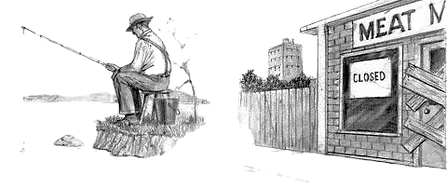
HISTORY OF OVILLA
1844 - 1850'S
FOUNDING ERA
Settlers established small family farms, clearing land to grow wheat, corn and vegetables. Livestock (cattle, pigs, chickens) were also common. Farming was done primarily for subsistence and barter.



1850's-1885
GROWTH OF A FARM COMMUNITY
The area grew as more families arrived. Farming intensified and included more commercial trade of crops. Community infrastructure like churches and a school emerged. Early mills and small trading posts served the farming population.

1885-1900
COTTON GIN ERA
The cotton gin was established in 1885, transforming Ovilla into a regional hub for cotton processing and marketing. Farmers brought cotton to town by wagon to be weighed and ginned. Dry-goods stores, a blacksmith, and post office supported the booming ag economy.

1900-1926
EARLY 20TH CENTURY PEAK & SETBACK
Ovilla remained a marketing center for farmers. Cotton and livestock were dominant. However, fires in 1918 and 1926 destroyed much of the business district. The town was also bypassed by railroads, stalling growth and market access.

1930's-1950's
AGRICULTURAL
DECLINE & DIVERSIFICATION
The Great Depression, changing markets, and urbanization across Texas caused many farms to shrink or close. Crop acreage declined; livestock became more common. Families often farmed part-time or shifted to pastureland.

1960's-1980's
SUBURBAN TRANSITION
Ovilla incorporated in 1963. While residential development increased, small farms, cattle and equine operations still dotted the landscape. Agriculture was no longer the economic driver but remained culturally significant.



1990-2010's
HERITAGE & HOBBY
FARMING
As Ovilla grew with suburban Dallas, agriculture shifted to hobby farms, horse properties and small-scale producers. A renewed interest in rural living and sustainable practices began to take hold.

2020's - PRESENT DAY
AGRI-REVIVAL, AGRO-TOURISM & COMMUNITY FARMING
Today Ovilla sees a return to its roots through local farms, backyard farming, educational workshops and small regenerative agriculture operations. The community is embracing its history as it reimagines a farm forward future.



